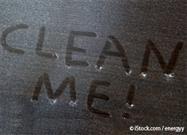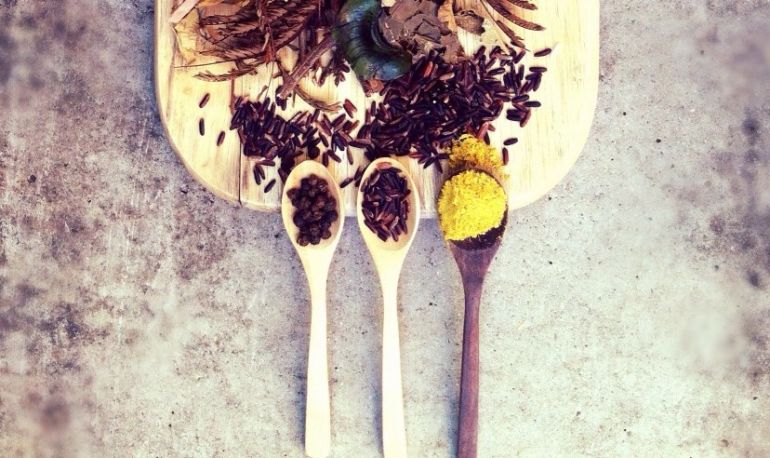
By Dr. Mercola
If you are like most Americans, you spend up to 90 percent of your day indoors. Whether you’re at home, in the car or at work, your hours are spent breathing indoor air.
Since your very life depends upon the air you breathe, it is vital you understand the risks associated with your indoor air quality and how to reduce the chemicals in your environment.
The U.S. Environmental Protection Agency (EPA) states the levels of indoor air pollution may be between two and five times higher inside your home or work than they are outside.1 Some indoor pollutants can be as much as 100 times more concentrated than outdoor levels.
The differences are related to the type of pollutants, the relative lack of air exchange in newer homes and the chemicals you may introduce to your home in your furniture, personal care, home and cleaning products. According to the EPA, poor air quality is one of the top public health risks today.2
While these factors are important to your health, dust plays another important role in your air quality. Recent research has identified chemical pollutants residing in the dust floating in the air and in the dust bunnies under your furniture.
Dust Is More Than Dirt
Dust is anything that breaks down into small enough particles that it can be moved by air currents outside or in your home. The dust in your home is actually a combination of dust and dirt from outside, combined with skin cells, pet dander and a number of other particles that vary from home to home.
Tiny fibers from your clothing, lint that flakes from your carpet and furniture, skin cells, fibers of human and pet hair and a number of other small particles may be found floating around your home or stuck under your furniture. The composition of dust may be complex and contain more than small particles of lint and dirt.
Paloma Beamer, Ph.D., associate professor in the school of Public Health at the University of Arizona, has spent years thinking about and studying dust. She calculates one-third of the dust in your home comes from indoor inorganic sources and two-thirds from soil and outdoor air particles tracked into your home.3
The composition of dust is complex, and so is the composition of one particle. According to Andrea Ferro, Ph.D., who teaches courses in air pollution at Clarkson University in New York, a dust particle can be a simple inorganic or organic compound, but others may have an inorganic center and an organic coating.
In other words, even those little specks of dust can be complicated. Without removal, dust can stick around for a very long time. In fact, quoted in NPR, Ferro says:4
"We're finding things like [the pesticide] DDT in many floor dust samples. We banned that decades ago, but it's still there."
There Is More Than You Think in Your Dust
You might find it hard to get really worked up about the dust in your home. After all, we do call those clumps under the furniture bunnies and not dust rats. You may have considered them more of a nuisance than a health problem.
However, recent research evaluating data from 25 prior studies finds there’s more in those little bunnies than meets the eye.5
Published in the journal Environmental Science and Technology, the study adds to a growing body of research demonstrating the dangers you are exposed to in your own home and workplace.
The chemicals residing in your dust may come from a variety of different sources, from toys and cosmetics to your shower curtain, furniture and cookware.
This study found two classes of chemicals present in high concentrations in your dust. The first is phthalates. These chemicals are commonly found and released from personal care products, such as nail polish, skin creams and lotions, perfumes, hair products and deodorants.6
Exposure has been linked to endocrine system disruption, decreased IQ and respiratory problems.7 These are all health conditions that affect children more quickly, making the inclusion of phthalates in children’s products even more disturbing.
The second class of chemicals is highly fluorinated chemicals (HFCs). These have been associated with testicular and kidney cancers and found in everyday common objects from pizza boxes to cell phones.8 Your home keeps a history of chemicals and other pollutants collecting in your dust. Beamer, quoted in Time Magazine, said:9
"Dust in our homes, especially deep dust in our carpets and furniture, is a conglomerate of substances over the life of the home and can provide a historical record of chemicals that have entered it."
Breathing and Eating Tiny Dust Particles Increases Your Health Risk
If you live in a highly industrialized area, you may have something unique in your dust. In this short video, one researcher from Lancaster University explains the results of a study finding millions of magnetite nanoparticles in the brains of people with Alzheimer’s disease.10
Scientists believe since these nanoparticles are so small, they easily travel over the olfactory nerve to the brain as you breathe them in. These particles create chaos in your brain as they are bioreactive and directly associated with damage seen in the brains of people suffering from Alzheimer’s.
In the brain, magnetite nanoparticles create reactive oxygen species (ROS) or free radicals. These free radicals create oxidative damage to brain cells, a hallmark feature in people suffering from Alzheimer’s disease. In this study, 37 brains of people aged 3 to 92 were studied.11
Researchers found millions of nanoparticles per gram of freeze-dried brain tissue, an amount lead researcher Barbara Maher, called “extraordinary.”12
Another study published in the journal Environmental Science and Technology reviewed 26 past studies, finding a large quantity of phthalates, phenols and flame retardant chemicals in dust particles.13
The concentration in these studies were so high researchers believe you likely inadvertently breathe and eat the particles laden with chemicals.
In this study, 90 percent of the homes had the 10 most common chemicals, which suggests the chemicals originate from items commonly found in your home. The chemical found in most homes was phthalates, commonly found in flexible plastics, personal care products and cosmetics.14
But the Dust Doesn’t Stop There
Milken Institute of Public Health at George Washington University compiled information from past studies, government agencies and other expert bodies and identified 45 different chemicals commonly found in homes.
These chemicals were associated with health hazards such as cancer, reproductive toxicity and endocrine disruption.15
The researchers pointed out that most studies evaluated the health hazards of a single toxic chemical, but finding these chemicals in combination in the dust of your home presents a potentially greater risk and needs further research.
The researchers acknowledged that the dust they studied was generally from the east and west coasts of the U.S. and therefore not nationally representative.
Dust in your home contains more than chemicals that are toxic to your body. Riding along on those dust bunnies are a variety of microbes. In one study evaluating dust in approximately 1,200 homes located across the U.S., indoor and outdoor dust samples demonstrated a broad range of different microbes. Differences appeared to be greater for bacteria than for fungi.16
The distribution of allergens were predictable across climates, but indoor bacterial communities appeared to be more significantly influenced by the occupants than the geography. Factors such as the male-to-female ratio and whether there were pets had a strong influence on the types of bacteria living in the dust.
However, while the variety of bacteria was different, each home had an average of more than 5,000 species of bacteria and 2,000 species of fungi.17 Although your dust may harbor thousands of different bacteria, this isn’t necessarily what makes you sick. Many of these bacteria are harmless, but the chemical and other pollutants that hitch a ride on dust particles decidedly are not.
Tips to Reduce Your Risk
One the best ways to reduce your risk of exposure is to reduce your risks at home where you spend the majority of your indoor time. Top tips to reduce chemical exposure and risk from dust accumulation include:
Eat Organic Meats and Raw Produce
As much as possible, buy and eat organic produce and free-range, organic meats to reduce your exposure to added hormones, pesticides and fertilizers. Also avoid milk and other dairy products that contain the genetically engineered recombinant bovine growth hormone (rBGH or rBST).
Eat mostly raw, fresh foods. Processed, prepackaged foods (of all kinds) are a common source of chemicals such as bisphenol-A (BPA) and phthalates.
Eat Wild-Caught Salmon or Purified Krill Oil
Rather than eating conventional or farm-raised fish, which are often heavily contaminated with PCBs and mercury, supplement with a high-quality purified krill oil, eat smaller fish or fish that are wild-caught and lab tested for purity. Wild-caught Alaskan salmon, herring and sardines are about the only fish I eat for these reasons.
Buy and Store Food in Glass Containers
Buy products that come in glass bottles or jars rather than plastic or cans, since chemicals can leach out of plastics and the linings of cans and into the contents. Store your food and beverages in glass rather than plastic, and avoid using plastic wrap. Use glass baby bottles and avoid plastic sippy cups for your little ones.
Cook With Ceramic or Glass
Replace your non-stick pots and pans with ceramic or glass cookware.
Use Clean Water
Filter your tap water — both for drinking and bathing. If you can only afford to do one, filtering your bathing water may be more important, as your skin absorbs contaminants. To remove the endocrine-disrupting herbicide Atrazine, make sure the filter is certified to remove it.
According to the Environmental Working Group (EWG), perchlorate can be filtered out using a reverse osmosis filter.
Use Earth-Friendly Products, No Plastics
Look for products that are made by companies that are earth-friendly, animal-friendly, green, non-toxic and/or 100 percent organic. This applies to everything from food and personal care products to building materials, carpeting, paint, baby items, upholstery and more. Replace your vinyl shower curtain with one made of fabric.
Vacuum and Dust Regularly
Use a vacuum cleaner with a HEPA filter to remove house dust, which is often contaminated with traces of chemicals. Wet mop your hard floors regularly, which will prevent dust from accumulating. Wipe furniture with a wet or microfiber cloth.
The small fibers of a microfiber cloth cause the dust to cling to it, while a wet cloth will attract and hold dust better than a dry one. Avoid chemical dusting sprays, which will only add to your home’s chemical load.
Damp dust your electronics frequently; these are a common source of flame-retardant chemicals in your dust. Use high-quality filters in your forced-air heating or cooling system and change them frequently. Caulk and seal cracks and crevices where dust might otherwise accumulate. Wash your hands before eating to remove dust from your hands and reduce the potential of ingestion.
Use Furniture and Clothing Without Fire Retardants or Stain Resistance
When buying new products such as furniture, mattresses or carpet padding, ask what type of fire retardant they contain. Be mindful of and/or avoid items containing PBDEs, antimony, formaldehyde, boric acid and other brominated chemicals.
As you replace these toxic items around your home, select those that contain naturally less flammable materials such as leather, wool and organic cotton. Avoid stain- and water-resistant clothing, furniture and carpets to avoid perfluorinated chemicals (PFCs).
Protect Your Children
Minimize your use of plastic baby and child toys, opting for those made of natural wood or fabric instead. Pay special attention to dusting areas where young children crawl, sit and play.
Use Natural Cleaning Products
Only use natural cleaning products or make your own. Avoid products that contain 2-butoxyethanol (EGBE) and methoxydiglycol (DEGME) — two toxic glycol ethers that can damage fertility and cause fetal harm.18
Use Safe Personal Care Products
Switch to organic brands of toiletries for shampoo, toothpaste, antiperspirants and cosmetics. You can replace many different products with coconut oil and baking soda, for example. EWG has a great database 19 to help you find personal care products that are free of phthalates and other potentially dangerous chemicals.
I also offer one of the highest quality organic skin care lines, shampoo and conditioner, and body butter that are completely natural and safe. Replace feminine hygiene products such as tampons and sanitary pads with safer alternatives.
Go Fragrance-Free
Look for products that are fragrance-free. One artificial fragrance can contain a dozen or more potentially toxic chemicals. Avoid artificial air fresheners, dryer sheets, fabric softeners or other synthetic fragrances.
Download a Helpful App
Milken Institute of Public Health recommends trying the Silent Spring Detox Me app available at silentspring.org. This free app shares simple tips to reduce your exposure to harmful chemicals at home and at work.













